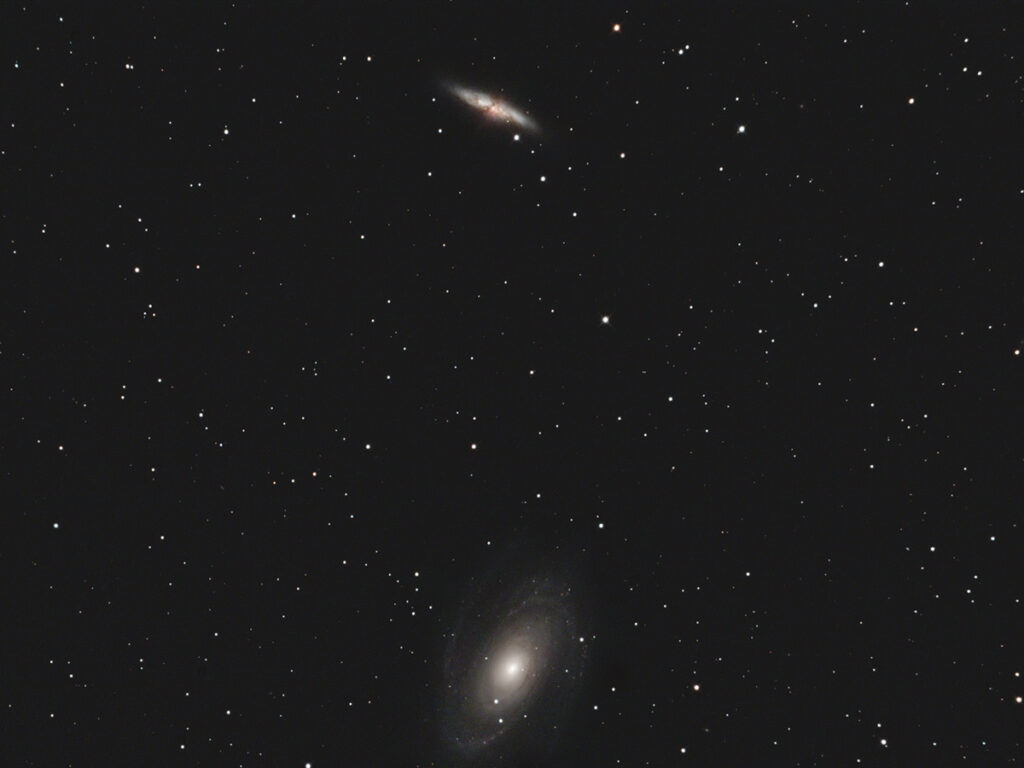
Telescope: Astro-Tech 8” f/8 Ritchey-Chretien, Orion Atlas EQ-G
Camera: Canon EOS Ra, Baader Mk III MPCC
Filter: Orion Imaging Skyglow Filter
Guide scope: Astro-Tech 60mm, Starlight Xpress Super Star, PHD2
Exposure: 33x180sec, ISO 800, saved as RAW
Darks: Internal (Long Exposure Noise Reduction On)
Flats: 32×1/20sec, Tee shirt flats taken at dusk
Average Light Pollution: Red zone, Bortle 8, fair transparency, bright moonlight
Lensed Sky Quality Meter: 17.5
Stacking: Mean with a 1-sigma clip.
White Balance: Nebulosity Automatic
Software: Backyard EOS, Deep Sky Stacker, Nebulosity, Photoshop
This is M81 (bottom) and M82 (top), two bright spiral galaxies lying about 12 million light years away in Ursa Major. At present, these two galaxies are about 150,000 light years apart, though a few hundred million years ago the two passed very close to each other. The dark dust lane slashing across M82 is one result of this close encounter with M81 as are the blue star formation regions in M81. Visually, M81 and 82 are fairly easy to see with a modest telescope even from my light polluted backyard. M81 shows its beautiful soft core similar to M31 while M82 shows its elongated shape interrupted by the dust lanes giving it a very irregular shape.
M81 and M82 is currently rising in the northeast as the sky darkens.









Recent Comments